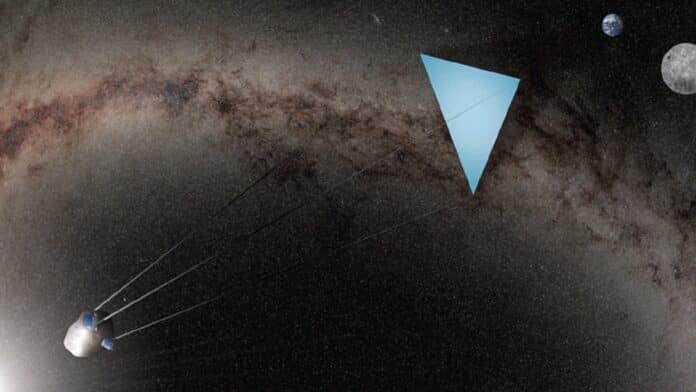In the ongoing battle against climate change, innovative solutions are being explored to curb its devastating impact on our planet. One such groundbreaking concept involves a sun’ umbrella,’ a futuristic structure tethered to an asteroid in space. This revolutionary idea proposes harnessing the power of this celestial shield to mitigate the effects of climate change on Earth.
By manipulating solar radiation and its interaction with our planet, this spaceborne innovation could hold the key to a more sustainable and secure future for humanity. In this article, we will delve into the fascinating concept of the sun’ umbrella’ and explore its potential implications in the fight against climate change.
Scientists are seeking innovative solutions to combat climate change as Earth’s climate continues to warm. Astronomer István Szapudi from the University of Hawaiʻi Institute for Astronomy has proposed a novel approach—a solar shield combined with a tethered asteroid—to reduce the amount of sunlight reaching Earth.
This engineering concept, outlined in the paper “Solar radiation management with a tethered sun shield” published in Proceedings of the National Academy of Sciences, could potentially mitigate climate change within a few decades. The idea involves creating a workable design to reduce solar radiation’s impact on Earth and counteract its warming effects.
The simplest way to reduce global temperatures is by shading the Earth from some of the Sun’s light, which is known as a solar shield. However, previous proposals faced challenges due to the immense weight required for a massive shield, making it expensive with conventional materials. Astronomer István Szapudi’s creative solution introduces two innovations: using a tethered counterweight and a captured asteroid as the counterweight.
These innovations significantly reduce the total mass needed, making the concept more feasible and cost-effective. The tethered asteroid balances to prevent solar radiation pressure from blowing away the shield, making it a promising approach to combat climate change.
Szapudi said, “In Hawaiʻi, many use an umbrella to block the sunlight as they walk about during the day. I was thinking, could we do the same for Earth and thereby mitigate the impending climate change catastrophe?”
Szapudi aimed to reduce solar radiation by 1.7% to prevent catastrophic global temperature rise. Through a tethered counterbalance towards the Sun, he significantly decreased the shield’s weight and counterweight to around 3.5 million tons, 100 times lighter than untethered shield estimates. Although the total mass remains beyond current launch capabilities, only 1% (about 35,000 tons) would be launched from Earth as the shield, with the potential for further reduction using lighter materials.
The remaining 99% would comprise asteroids or lunar dust, making the tethered structure more cost-effective and quicker to deploy than other designs. Despite rocket challenges, Szapudi’s approach makes the concept feasible with current technology, unlike previous unattainable ideas, emphasizing the need for a strong and lightweight graphene tether to ensure the success of this solar radiation management approach.
In conclusion, the idea of a sun’ umbrella’ tethered to an asteroid is an innovative and ambitious approach to mitigate climate change’s impact on Earth. While it holds promise, the concept also presents significant challenges and uncertainties that require careful evaluation and consideration. As we search for practical solutions to combat climate change, it is essential to explore diverse strategies and collaborate globally to ensure a sustainable future for generations to come.
Journal Reference:
- István Szapudi, Solar radiation management with a tethered sun shield. Proceedings of the National Academy of Sciences. DOI: 10.1073/pnas.2307434120.
